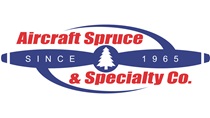Training Tip: Things you can't practice too much
I’ve heard more than one pilot fret about what to do when they solo. They don’t want to just “bore holes in the sky.”
Boring holes doesn’t have to be boring. You can make practice sessions fun and fruitful—and you get the holes for free.
Bore coordinated holes. In slow flight, every control input is more challenging to make without slip or skid because of increased induced drag. Learn to feel coordinated flight and keep your eyes outside to watch for other pilots out boring their own holes in the sky.
Bore crosswind holes. Please repeat after me: “There is no such thing as too much crosswind landing practice.” But there is such a thing as too little, as accident reports demonstrate. Crosswinds come in all intensities and from all directions, sometimes fading or strengthening or becoming erratic as altitude decreases. There are crosswinds that make you go around to land somewhere else, but there are no boring crosswinds.
Bore traffic pattern holes. Every takeoff and every landing during a session in the pattern is an opportunity to perform a specialized technique. Make a soft-field takeoff, focusing on the key element of lifting off at minimum speed and accelerating in ground effect to climb speed. Then come around the pattern for a genuine short-field landing, using a specific runway marking, intersection, or taxiway at a known distance as your stopping point.
Bore holes at home with a home simulator or by chair-flying. On days when even the ducks are walking, keep sharp at home by reviewing aviation weather data and interpreting the big picture.
Bore holes (with your eyes) in checklists. Learn your aircraft emergency checklists and other memory items from the comfort of your couch.
I have never heard a pilot say they wished they had spent less time becoming skilled and more time boring holes in the sky.



